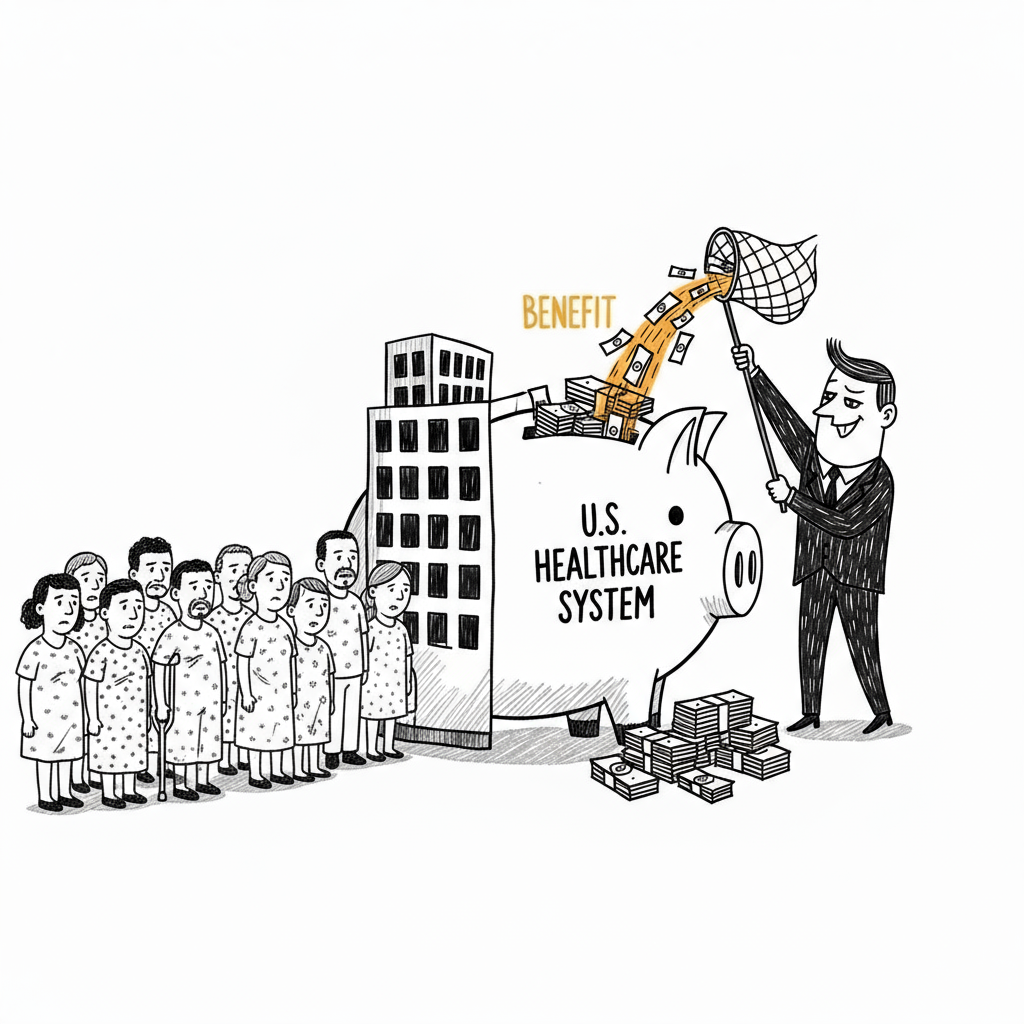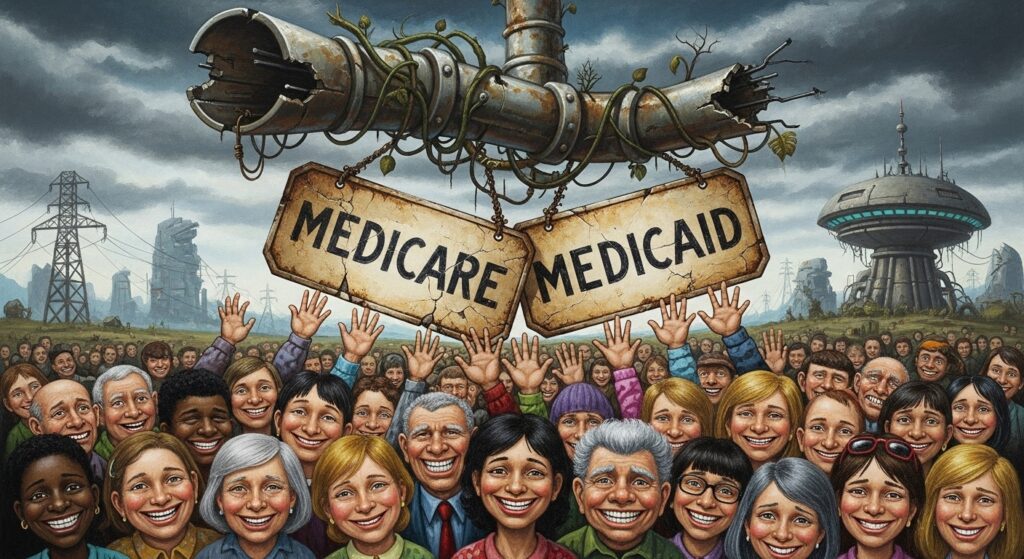
Introduction: Follow the Money, Not the Marketing
The United States spends more on healthcare than any other developed nation—by a long shot. And yet:
- Millions remain uninsured or underinsured.
- Doctors are burning out.
- Patients can’t afford prescriptions.
- Hospitals are closing in rural areas.
So here’s the uncomfortable question:
If the system isn’t working for patients, and it’s not working for providers—who is it working for?
Spoiler alert: It’s working very well for a handful of powerful stakeholders.
Let’s follow the money, demystify the monopolies, and uncover who’s really benefiting from the way American healthcare is structured.
The System Wasn’t Designed for Patients—It Was Built for Payors
To understand how we got here, you have to look at the origins of the system.
We don’t have a national healthcare plan. We have a patchwork of:
- Employer-sponsored private insurance
- Government programs like Medicare and Medicaid
- Out-of-pocket care for those who fall between the cracks
This structure was never built with patient outcomes in mind. It evolved from:
- Wage freezes during WWII (which led employers to offer health benefits as a workaround)
- The rise of for-profit insurance
- A fee-for-service model that prioritized volume over value
The result? A system where financial intermediaries—not clinicians—control access to care.
Who Really Wins in This System?
1. Insurance Companies
Private insurers rake in billions in profits while telling patients that necessary care is “not covered.”
They profit when:
- Claims are denied
- Patients delay care
- Formularies push cheaper (not necessarily better) drugs
- Prior authorizations are never appealed
Insurers get to set the rules, adjudicate the rules, and collect the profits—often without consequence.
2. Pharmacy Benefit Managers (PBMs)
These middlemen decide which drugs are covered and at what price. They negotiate behind closed doors, take rebates from manufacturers, and profit from the spread between wholesale and patient cost. One PBM exec told me when they go into a new region they have two questions, ‘how much do you want to save’ and’ how hard can we push on your providers?’
Who loses? The patient who can’t get the drug their doctor prescribed.
3. Hospital Systems & Private Equity
Major hospital systems charge wildly inflated “chargemaster” prices and often own:
- Outpatient centers
- Labs
- Imaging services
- Urgent cares
- Specialist networks
They profit not from care—but from owning the entire patient journey.
Private equity is buying up practices and facilities, squeezing profits, and then exiting—leaving communities with broken care models.
Patients: “Covered” But Still at Risk
Coverage doesn’t equal access.
Even if you have insurance, you may still face:
- High deductibles
- Narrow provider networks
- Denied claims
- Surprise billing
- Formularies that override your doctor’s judgment
Patients are led to believe they have a “comprehensive plan,” only to find that coverage ends when care begins.
Providers: Overworked, Underpaid, and Controlled
Physicians spend more time fighting insurers than caring for patients.
- Administrative burden is at an all-time high
- Reimbursement rates are stagnant (or falling)
- Independent practices are disappearing
- Clinical autonomy is eroding
Many physicians are forced to join large systems or corporate groups just to survive.
And when the corporation owns the clinic, decisions are driven by revenue—not relationships.
The Myth of Competition
In most industries, competition lowers costs and improves quality.
But in U.S. healthcare?
We have consolidation, not competition.
- A few insurers dominate each state
- A few PBMs control most prescriptions
- A handful of hospital systems own most care delivery in major markets
This concentration leads to higher prices, fewer choices, and diminished accountability.
Let’s Be Clear: This Is a Structural Issue—Not a Personal One
It’s easy to blame bad doctors, irresponsible patients, or bureaucrats. But those are symptoms—not causes.
The real problem lies in:
- Perverse incentives
- Regulatory loopholes
- Lack of transparency
- And a system that allows profit to dictate care access
Until we acknowledge the structural design, we’ll keep making surface-level fixes that don’t address the root cause.
So… What’s the Answer?
I’m not here to pitch a single solution. But I can offer a few guiding principles:
- Realign incentives so providers are rewarded for outcomes—not volume
- Increase transparency in drug pricing, reimbursement, and networks
- Break up monopolistic behavior in PBMs, payors, and hospital systems
- Protect patient choice and provider autonomy
- Modernize Medicare and Medicaid with realistic payment models and administrative reform
This isn’t about government vs. private sector.
It’s about accountability vs. unchecked power.
Final Thoughts: You’re Not Crazy—The System Is Rigged
The U.S. healthcare system wasn’t built for patients. Its original purpose was to provide catastrophic care and prevent financial ruin from serious medical costs. Medicare’s management, once known as the Healthcare Financing Administration (HCFA)–the name says a lot in itself–highlights this historical focus. However, private insurers have since prioritized their interests over those of providers and patients, now dictating the system’s rules.
It was built to protect their interests, manage risk, and maximize profit.
Patients and providers were simply added into the mix as necessary components—not priorities.
We need to flip that.
We need a system that starts with care—not cost.
And we need every patient and provider to understand that they’re not broken—The system is.
About the Author
Douglas J. Jorgensen, DO, CPC, FAAO, FACOFP
Dr. Doug is a nationally recognized medical policy expert, audit consultant, and practicing physician. With decades of experience at the intersection of care and compliance, he advocates for truth, transparency, and a healthcare system that works for the people it’s supposed to serve.


